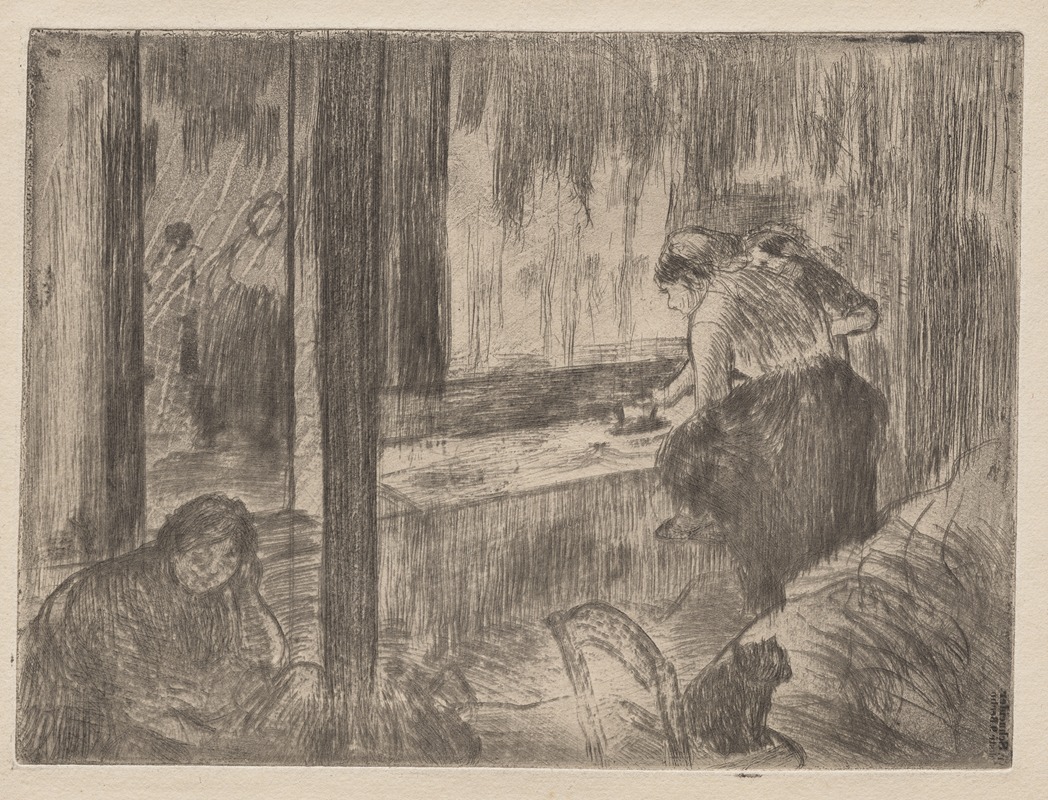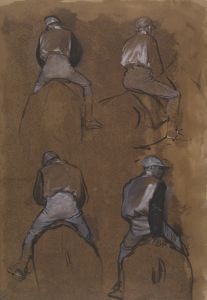
The Laundresses
A hand-painted replica of Edgar Degas’s masterpiece The Laundresses, meticulously crafted by professional artists to capture the true essence of the original. Each piece is created with museum-quality canvas and rare mineral pigments, carefully painted by experienced artists with delicate brushstrokes and rich, layered colors to perfectly recreate the texture of the original artwork. Unlike machine-printed reproductions, this hand-painted version brings the painting to life, infused with the artist’s emotions and skill in every stroke. Whether for personal collection or home decoration, it instantly elevates the artistic atmosphere of any space.
Edgar Degas, a prominent French artist associated with the Impressionist movement, is renowned for his depictions of modern life in Paris during the late 19th century. Among his diverse body of work, "The Laundresses" is a notable piece that captures the everyday life of working women in the city. This painting, like many of Degas' works, reflects his keen interest in the human figure and his ability to portray the nuances of movement and labor.
"The Laundresses" is part of a series of works by Degas that focus on laundresses, a common subject in his oeuvre. These paintings and pastels typically depict women engaged in the physically demanding work of washing and ironing clothes. Degas was fascinated by the repetitive and strenuous nature of their labor, and he sought to capture the essence of their daily routines through his art.
In "The Laundresses," Degas employs his characteristic style, which combines elements of Impressionism with a more classical approach to composition and form. The painting is notable for its use of light and shadow, which Degas skillfully manipulates to highlight the figures and their environment. The laundresses are depicted in various poses, absorbed in their tasks, which conveys a sense of realism and immediacy. Degas' attention to detail is evident in the way he renders the textures of the fabrics and the subtle play of light on the women's skin and clothing.
Degas often used unconventional perspectives and cropping in his compositions, a technique that is evident in "The Laundresses." This approach gives the viewer a sense of intimacy and immediacy, as if they are observing a moment in the lives of these women. The painting's composition draws the viewer's eye across the canvas, encouraging them to explore the scene and the interactions between the figures.
While Degas is often associated with the Impressionist movement, he did not fully embrace all of its tenets. He preferred to work in his studio rather than en plein air, and he was more interested in the human figure than in landscapes. His work on laundresses reflects this focus, as he meticulously studied and sketched his subjects before creating his final compositions.
"The Laundresses" is a testament to Degas' ability to capture the beauty and dignity of everyday life. Through his depiction of these working women, Degas offers a glimpse into the social realities of his time, highlighting the often-overlooked labor of women in the urban environment. His work remains influential, celebrated for its technical mastery and its empathetic portrayal of the human condition.
Overall, "The Laundresses" exemplifies Degas' skill in combining traditional techniques with modern subjects, resulting in a work that is both timeless and deeply rooted in the context of 19th-century Parisian life.


















